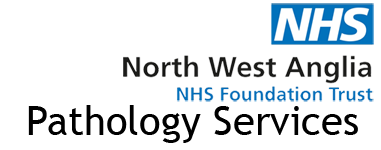MHRA, SHOT and SABRE
Medicines and Healthcare products Regulatory Agency (MHRA)
The MHRA protects the health of the public by making sure that medicines and medical devices are acceptably safe. With the introduction of the Blood Safety and Quality Regulations 2005 No. 50 and The Blood Safety and Quality (Amendment) (No.2) Regulations 2005 No. 2898 (effective for the purposes of regulation on 8 November 2005), the MHRA became responsible for ensuring that blood products, blood establishments and blood banks are acceptably safe.
The above regulations implement the requirements of the following EU Directives:
- Directive 2002/98/EC - setting standards of quality and safety for the collection, testing, processing, storage and distribution of human blood and blood components
- Directive 2004/33/EC - regarding certain technical requirements for blood and blood components
Two further technical Directives were adopted by the European Commission on 30 September 2005:
- Directive 2005/61/EC - regarding traceability requirements and notification of serious adverse reactions and events
- Directive 2005/62/EC - regarding Community standards and specifications relating to a quality system for blood establishments
These Directives were transposed into UK legislation by the Blood Safety and Quality (Amendment) Regulations 2006 No. 2013, which came into force on 31 August 2006. The Blood Safety and Quality Regulations apply to blood establishments and to hospital blood banks. Hospital blood banks, such as the Blood Transfusion department in Peterborough City Hospital are required to comply with the following directives:
- If they collect autologous blood and blood components submit an application for a blood establishment authorisation
- If they perform secondary processing of blood component (for example, irradiation, washing, splitting etc.) submit an application for a blood establishment authorisation
- Maintain a quality system based on the requirements of Directive 2005/62/EC
- Notify the competent authority of any serious adverse events and serious adverse reactions (haemovigilance /SABRE)
- Confirm compliance with the requirements of the directives by submitting an annual compliance report to the competent authority
- Maintain records to ensure full traceability from donation to the point of delivery for not less than 30 years
More information on the MHRA can be found on their website at https://www.gov.uk/government/organisations/medicines-and-healthcare-products-regulatory-agency.
Serious Hazards Of Transfusion (SHOT)
The Blood Transfusion Laboratory at Peterborough City Hospital is enrolled in the SHOT scheme and has been for many years. Any major incidents and any near-misses have to be reported following the completion of a local investigation.
The SHOT Scheme was launched in November 1996, and aims to collect data on serious sequelae of transfusion of blood components. Through the participating bodies, the information obtained contributes towards:
- Improving the safety of the transfusion process
- Informing policy within the Transfusion Service
- Improving standards of hospital transfusion practice
- Aiding production of clinical guidelines for the use of blood components
Participation in the scheme is voluntary, but is required for compliance with HSC/2002/009 'Better Blood Transfusion' and is a standard for the Clinical Negligence Scheme for Trusts in England. Active participation in SHOT by all hospitals was recommended by the CMO for England in his 2003 Annual report. The SHOT organisation is now intimately linked to the SABRE group (see below), participation in which is mandatory. Unlike SABRE which only takes reports of adverse events, SHOT also takes reports of near-misses.
More information on SHOT can be found on their website at http://www.shotuk.org.
SHOT release annual reports with summaries and supplementary information, which can be found on the SHOT site at http://www.shotuk.org/shot-reports/.
SHOT have released publications based on these reports detailing learning points from both a clinical perspective and a laboratory perspective. These are available on the SHOT site at https://www.shotuk.org/resources/.
Serious Adverse Blood Reactions & Events (SABRE)
The UK Blood Safety and Quality Regulations 2005 and the EU Blood Safety Directive require that serious adverse events and serious adverse reactions related to blood and blood components are reported to the MHRA. SABRE is an online system that allows blood establishments and blood banks to electronically submit these reports direct to the MHRA. In addition, integrated SHOT questionnaires enable reports to be sent to both organisations simultaneously.



